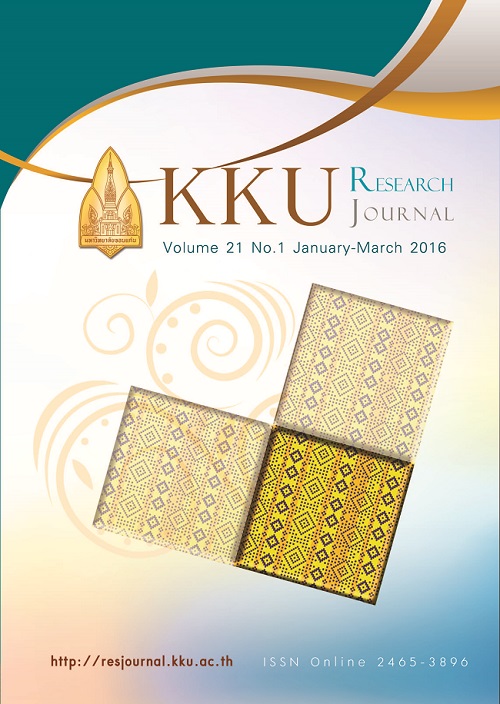Application of microsatellite markers for identification of wine grape varieties in Thailand
Main Article Content
Abstract
The use of Microsatellite markers for identifying grapevine varieties. Eighteen primer pairs were selected for identifying amplify 29 grapevine varieties. The result shower that a total of 133 alleles with an average of 7.4 alleles per locus were found to be polymorphic. All alleles size were approximately 112-262 base pair. The cluster analysis using unweighted pair group method with arithmetic mean (UPGMA) based on genetic dissimilarity matrix with 0.9. Twenty nine grapevine varieties were clustered into two major groups. This research indicated that the microsatellite markers could be used to examine and compare the genetic resources among closely samples. The microsatellite maker is useful for discrimination and analysis of genetic diversity of grapevine varieties, and also for grapevine breeding in the future.
Article Details
References
[2] Anonymous. GeneScan Reference Guide Chemistry Reference for The ABI PrismTM 377 Genetic Analyzer PE Applied Biosystems. Division of Perkin-Elmer. International Union of Pure and Applied Chemistry. 1997; pp 1-33.
[3] Bowers J., Dangl G., Vignani R., and Meredith C. DNA isolation and characterization of new polymorphic simple sequence repeat loci in grape (Vitis vinifera L.). Genome. 1996; 39. 628-633.
[4] Bowers JE., Dangl GS., Meredith CP., 1999. Development and characterization of additional microsatellite DNA markers for grape. Am J Enol Viticult 50: 243–246.
[5] Dzhambazova T., Tsvetkov I., Atanassov I., Rusanov K., Martinez Zapater JM., Atanassov A.and Hvarleva T. Genetic diversity in native Bulgarian grapevine germplasm (Vitis vinifera L.) based on nuclear and chloroplast microsatellite polymorphisms. Vitis. 2009; 48 (3), 115–121.
[6] Eiras-Dias JE., Pereira CA and Baptista da Cunha JP. Catalogo das Castas. Regiao do Ribatejo, Oeste e Peninsula de Setubal. Instituto da Vinha e do Vinho, Estacao dVitivinicola Nacional 1988.
[7] Garcia-Beneytez, E., MorenoArribas MV., Borrego J., Polo MC and Ibanez J. Application of a DNA Analysis Method for the Cultivar Identification of Grape Musts and Experimental and Commercial Wines of Vitis vinifera L. Using Microsatellite Markers. J. Agric. Food Chem. 2002; 50(21): 6090-6096. [8] Huang, H., Lu J., Ren Z., Hunter W., Dowd E and Dang P. Mining and validating grape (Vitis L.) ESTs to develop EST-SSR markers for genotyping and mapping. Mol Breed. 2010; 28(2): 241-254.
[9] Nilnond. S. Grape production in Thailand. In M.K. Papademetriou and F.J. Dent, eds. (10) Grape production in the Asia-Pacific Region. FAO Regional Office for Asia and the Pacific, Bangkok, Thailand. 2001; pp. 70-79.
[10] Sefc K., Regner F., Turetschek E., Glossl J and Steinkellner H. Identification of microsatellite sequences in Vitis riparia and their applicability for genotyping of different Vitis species. Genome . 1999; 42: 367-373.
[11] This P., Jung A., Boccaci P., Borrego J., Botta R., Costantini L.,Crespan M., Dangl GS., Eisenheld C., Ferreira-Monteiro F.,Grando S., Ibanez J., Lacombe T., Laucou V., Magalhaes R., Meredith CP., Milani N., Peterlunger E., Regner F., Zulini L and Maul E. Development of a standard set of microsatellite reference alleles for identification of grape cultivars. Theor. Appl. Genet. 2004; 109: 1448-1458.
[12] Thome, MR and Scott NS. Microsatellite repeats in grapevine revcal DNA polymorphisms wwhen analyzed as sequence-tagged sites (STSs). Theor. Appl. Genet. 1993; 86: 985-990.


